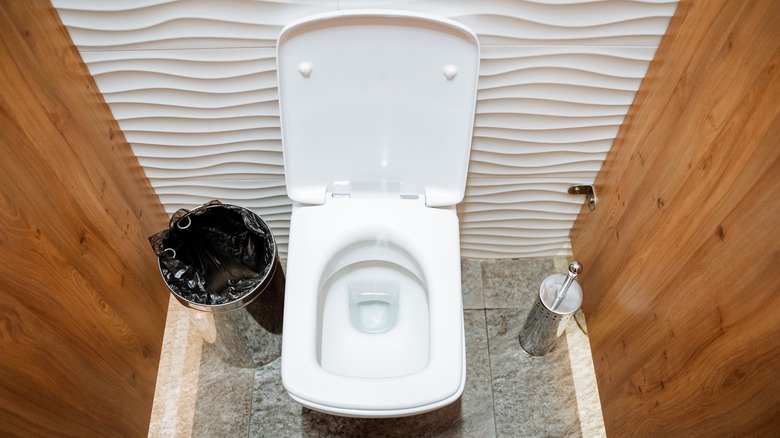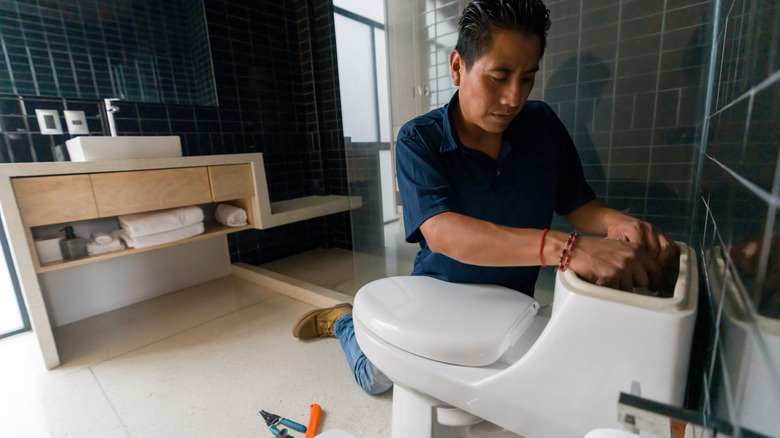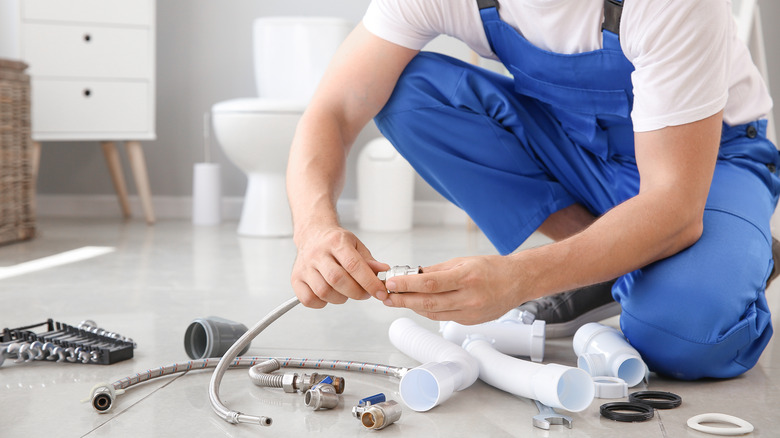If Your Toilet Makes A Banging Sound After Flushing, Here's How To Fix It
If you've ever experienced a loud banging or knocking sound after flushing a toilet, it could be a sign that you need to have your plumbing system checked. These noises are often caused by a phenomenon known as water hammer, also known as hydraulic shock or hydraulic surge. Water hammer occurs when there is a sudden interruption of water flow, which results in a spike in water pressure within the pipes.
In a plumbing system, water is constantly under pressure, which enables it to flow against gravity and reach upper levels in your home. However, when the water fill valve is closed, the water on the other side of the valve becomes still. Although it remains under pressure, it lacks the energy associated with moving water and settles. When the valve is opened again, the entire pipeline, starting from the water main, propels water toward the toilet tank with significant force. The water hammer problem arises when the automatic water valve abruptly shuts closed and cuts off the flow of water. At this point, the rushing water has nowhere to go and collides with itself. This impact generates a knocking sound as the energy disperses and pushes against the pipes.
How to fix water hammer
There are a few ways you can temporarily solve a noisy loo, but keep in mind that it's better to call a professional sooner rather than later. The first way to help alleviate water hammer is by installing a water hammer arrestor. These devices feature air-filled cylinders that absorb the impact of sudden increases in water pressure. Most water hammer arrestors can be easily installed between the shut-off valve and supply line by using screw-type connectors. In order for it to be fully effective, it's recommended to install one arrestor on the hot-water supply line and another on the cold-water supply line.
Another quick and easy band-aid fix is to manually lower your water pressure. To regulate the pressure, you'll want to locate the valve that reduces the pressure. This can typically be found where the main water supply line enters your home. Adjust it by turning the handle so that the setting remains below 50 pounds per square inch (PSI). You might need to use a screwdriver or wrench to turn the valve. This option can not only resolve water hammer, but can also help you conserve water. In addition, you'll also want to make sure that the brackets that fasten the pipes to the wooden joists or studs are all tightened. Over time, these can loosen, which allows the pipes to shift and move. If they're tight, then this makes them more stable.
Don't put off calling a professional
While the knocking noises may initially seem like just an annoyance, they can actually be a cause of plumbing damage. Water hammer can cause deterioration of pressure gauges and flow meters. The shockwave generated by the pressure buildup causes them to spike to high levels, which they can only sustain for a temporary allotment of time. Blown diaphragms in the pressure tanks can disrupt the regulation of water flow, which can result in a constantly flowing toilet. Additionally, water hammer can weaken the joint gaskets on your piping, which can mean serious leaking issues.
On top of that, over time, water hammer can gradually erode and weaken the entire plumbing system and compromise the joints, which can increase the likelihood of leaks or ruptures. So while you might be able to temporarily fix the issue on your own, it's always a good idea to call in a professional for peace of mind. Nothing spells disaster like when your home's plumbing system suddenly ceases to function.


